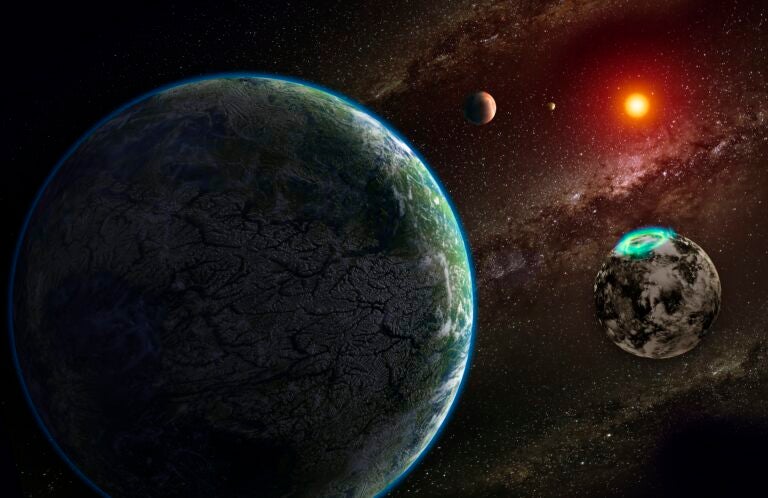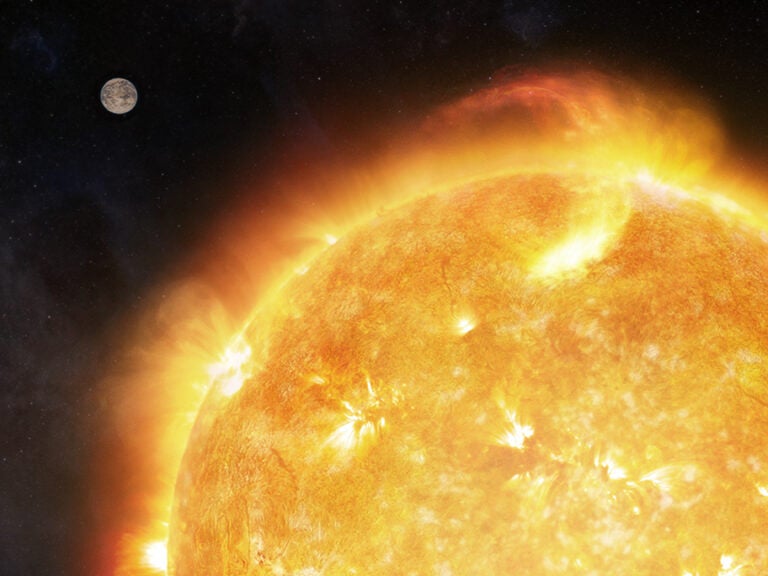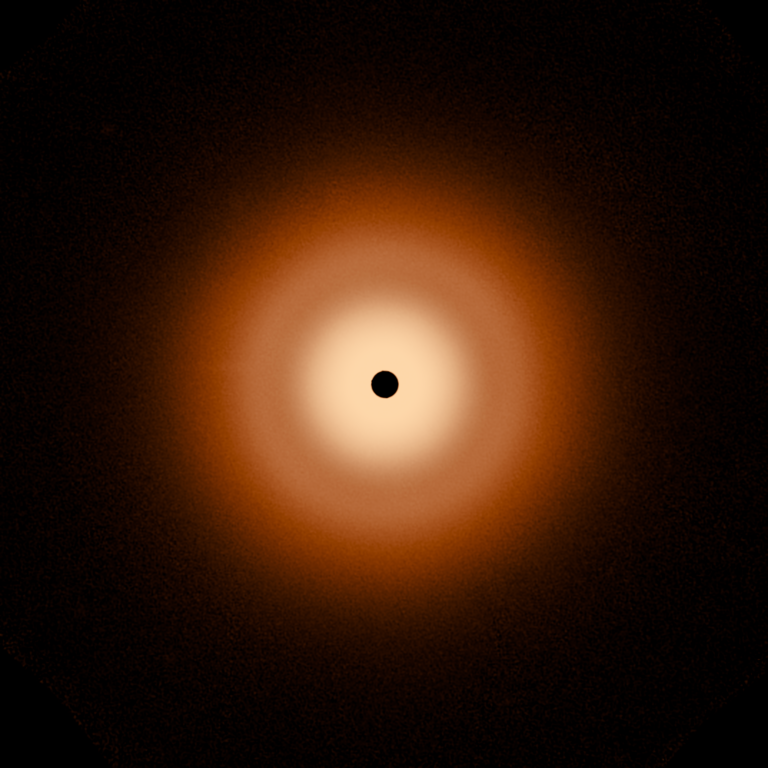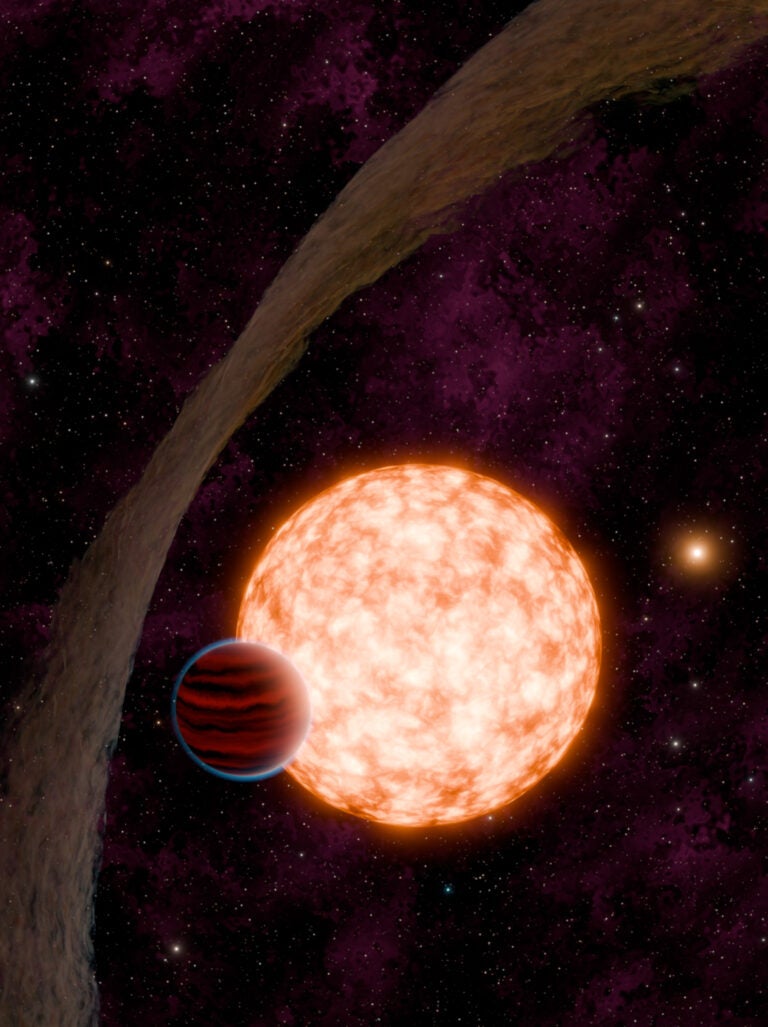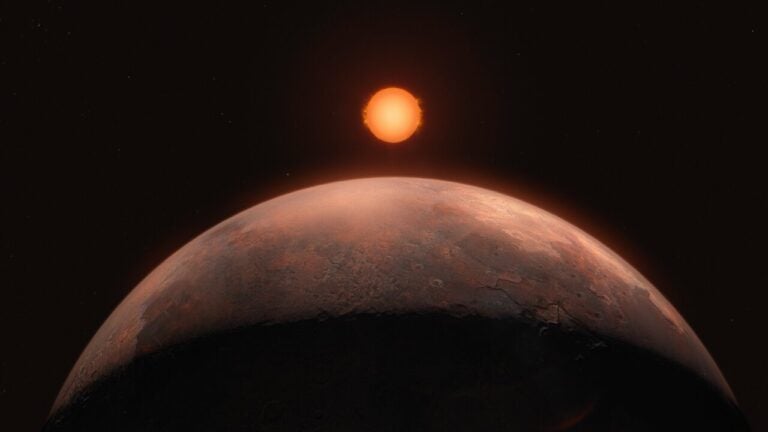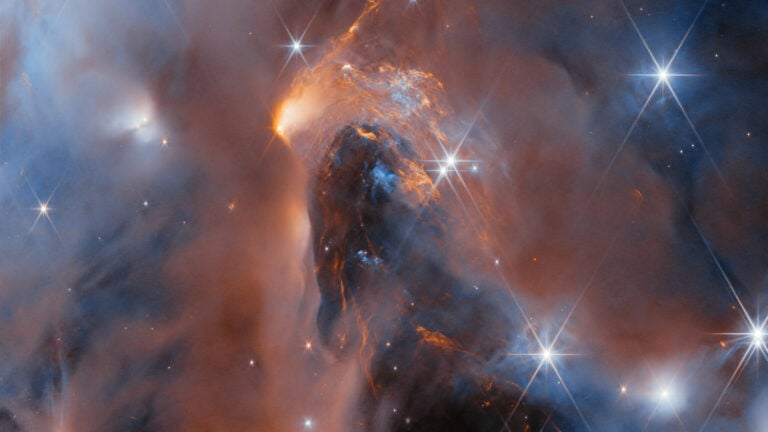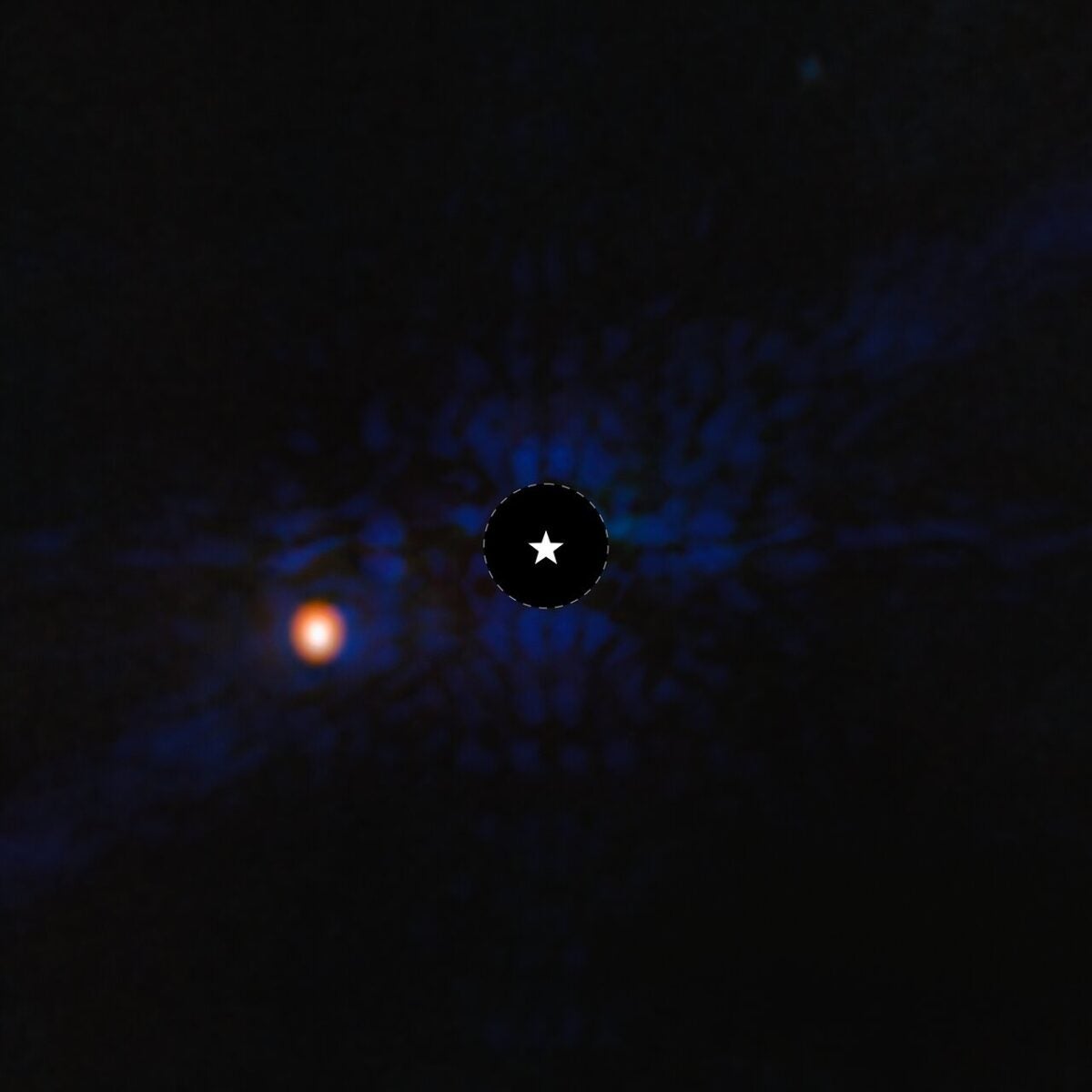
A case of cosmic mistaken identity led to astronomers finding a new exoplanet where an old one should have been. The world, Epsilon Indi Ab, now takes the place of a planet with the same designation that, it turns out, doesn’t exist.
The bizarre case, which seems like a Law & Order plot twist, is reported today in Nature, and is based on observations with the James Webb Space Telescope (JWST) that also include an incredible feat: directly imaging a cold, older planet far from its star.
In fact, Epsilon Ind Ab is now the coldest exoplanet to ever be imaged directly, through a method that blocks its host star’s light to allow the planet’s meager light to shine through. All the exoplanets astronomers have previously imaged are young — less than a few hundred million years old — and thus hot (and bright) due to leftover heat from their formation. But Epsilon Indi A, the home star of the newly found planet, is roughly the age of the Sun. Additionally, it is in a binary system with a brown dwarf, making this a particularly intriguing group to study.
Setting the record straight
A planet around Epsilon Indi A was previously detected through two similar but independent methods: astrometry, which looks for visual deviations in the position of a star caused by the tug of a planet as it orbits, and radial velocity, which watches for shifts in the light from a star as the planet tugs on its parent.
The previously detected planet was estimated to be about three times the mass of Jupiter and orbiting about 70 percent farther from its star than Jupiter, or nearly nine times the distance between Earth and the Sun.
Looking with JWST’s Mid-Infrared Instrument (MIRI), the team instead found a planet that doesn’t match those characteristics. To start, it is far more massive, around 6.3 times the mass of Jupiter. And it orbits some 28 times the distance of Earth from the Sun, a threefold difference from the original “find.”
What’s more, the astronomers believe this is the only massive planet in the system, ruling out the possibility that the previously detected three-Jupiter-mass planet is still lurking there, ready for the spotlight.
“This planet explains all of the data, and it’s the only planet that we see evidence for right now in the system,” study lead author Elisabeth Matthews of the Max Planck Institute for Astronomy in Heidelberg, Germany, says. “Further, the planet seems to have an eccentric orbit, which precludes other planets on nearby orbits [as] anything that crosses the orbit of this eccentric planet would certainly not be dynamically stable.”
However, Matthews says it doesn’t rule out Neptune-sized or smaller, rocky planets in the system, which may be harder to detect.
Something in the air
But astronomers are really excited about this system for a different reason. Because Epsilon Indi Ab is bright and far from its star, it should be easy to separate out its light from the host star’s to find out what’s in the planet’s atmosphere. Initial observations suggest an atmosphere surprisingly high in “metals” — a term astronomers use for any element heavier than helium, and unusual for a planet of its mass. Epsilon Indi Ab’s atmosphere seems to include “significant” methane, ammonia, carbon dioxide, and carbon monoxide, according to the paper; however, those results are preliminary.
The team has put in for additional observing time on JWST to further investigate the planet, including its atmospheric properties.
“In terms of the exoplanet properties, a big takeaway is that the planet is brighter than we expected in the mid-infrared, and even fainter than we expected at shorter wavelengths,” Matthews says. “We inferred this might mean that it has a lot of molecules in its atmosphere, or a lot of cloud cover in the upper atmosphere of the planet.”
Plus, the methods the team used to find and study the planet so far — which involved using JWST alongside older radial velocity measurements to determine the characteristics of the planet and its orbit — could provide powerful tools for understanding exoplanets in the future.
“This observation is a great demonstration of how well JWST is working for this science case, so hopefully that will encourage more observations of this type,” Matthews says.




